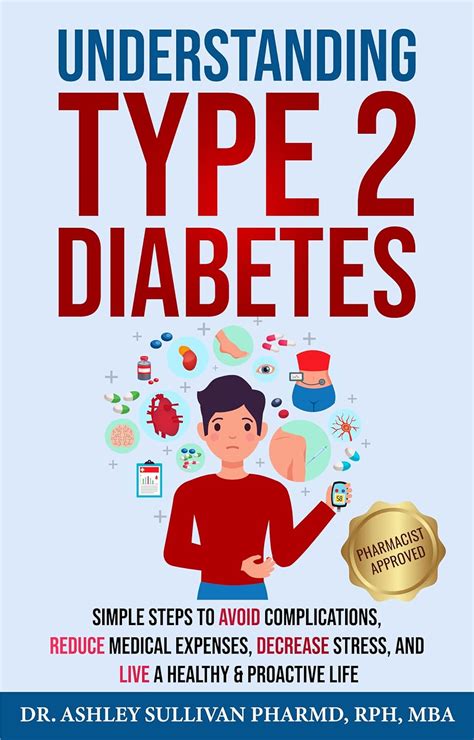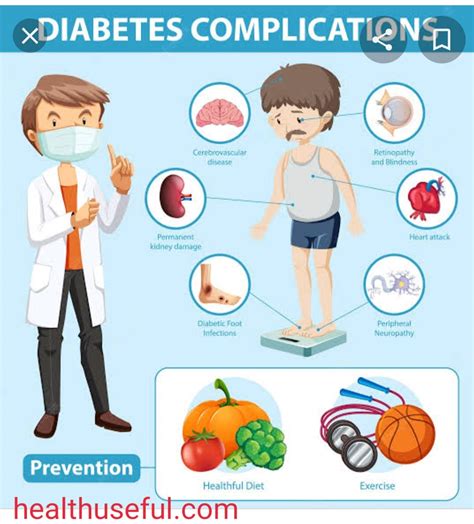Intro
Manage Type 2 Diabetes with 5 expert tips, including diet control, exercise routines, and medication management, to regulate blood sugar levels and prevent complications, ensuring a healthy lifestyle for diabetic patients through effective glucose monitoring and insulin therapy.
Living with type 2 diabetes requires a commitment to managing the condition effectively to prevent complications and improve quality of life. Understanding the importance of lifestyle modifications, dietary changes, and medical interventions is crucial for individuals diagnosed with type 2 diabetes. The goal is to maintain blood sugar levels within a target range, which helps in preventing damage to organs and tissues. Managing type 2 diabetes is not just about controlling blood sugar; it's also about reducing the risk of heart disease, stroke, and other conditions associated with diabetes.
Effective management of type 2 diabetes involves a multifaceted approach that includes dietary adjustments, increased physical activity, weight management, and, when necessary, medication. Each of these elements plays a critical role in helping individuals with type 2 diabetes lead active and healthy lives. Moreover, education and support from healthcare providers, family, and friends are essential in navigating the challenges of living with diabetes. By adopting healthy habits and staying informed, individuals can better manage their condition and reduce the risk of complications.
The journey to managing type 2 diabetes begins with understanding the condition itself. Type 2 diabetes is characterized by the body's inability to use insulin effectively, a condition known as insulin resistance, and over time, the pancreas may also produce less insulin. This results in high blood sugar levels, which can lead to a variety of symptoms and complications if not managed properly. Symptoms can include increased thirst and urination, fatigue, blurred vision, and slow healing of cuts and wounds. Recognizing these symptoms and seeking medical attention early is crucial for timely diagnosis and treatment.
Understanding Type 2 Diabetes

Understanding the pathophysiology of type 2 diabetes is essential for developing effective management strategies. It involves recognizing how insulin resistance and impaired insulin secretion contribute to elevated blood glucose levels. Lifestyle interventions, including dietary changes and increased physical activity, are foundational in improving insulin sensitivity and reducing blood sugar levels. Additionally, understanding the role of genetics, obesity, and other risk factors can help in tailoring management plans to individual needs.
Lifestyle Modifications for Type 2 Diabetes

Lifestyle modifications are critical in the management of type 2 diabetes. These include dietary changes aimed at reducing carbohydrate intake, increasing fiber consumption, and choosing foods with a low glycemic index. Regular physical activity, such as walking, cycling, or swimming, for at least 150 minutes per week, can significantly improve insulin sensitivity. Weight loss, particularly for individuals who are overweight or obese, is also beneficial as it can lead to improved blood sugar control and reduced risk of complications.
Dietary Considerations
A healthy diet for managing type 2 diabetes focuses on whole, unprocessed foods such as vegetables, fruits, whole grains, lean proteins, and healthy fats. It's essential to limit intake of sugary drinks, refined carbohydrates, and saturated fats. Meal planning and portion control are also important to maintain a balanced diet and prevent overeating. Foods with a low glycemic index, which cause a slower and smaller rise in blood sugar levels, are recommended.Medical Interventions

For many individuals with type 2 diabetes, lifestyle modifications alone may not be sufficient to achieve target blood sugar levels, and medical interventions become necessary. Metformin is often the first-line medication prescribed for type 2 diabetes due to its effectiveness in reducing glucose production in the liver and improving insulin sensitivity. Other medications, such as sulfonylureas, meglitinides, thiazolidinediones, and SGLT2 inhibitors, may also be prescribed based on individual patient profiles and the presence of other health conditions.
Monitoring and Adjustments
Regular monitoring of blood sugar levels, lipid profiles, and blood pressure is crucial for assessing the effectiveness of the management plan and making necessary adjustments. This includes self-monitoring of blood glucose (SMBG) at home and regular check-ups with healthcare providers. Adjustments to diet, physical activity, or medication may be needed over time to maintain optimal control of diabetes and prevent complications.Complications and Prevention

Type 2 diabetes can lead to several serious complications if not managed properly. These include cardiovascular diseases, such as heart attacks and strokes, kidney damage (nephropathy), nerve damage (neuropathy), and eye damage (retinopathy). Preventing these complications involves maintaining good blood sugar control, managing blood pressure and cholesterol levels, avoiding smoking, and engaging in regular physical activity.
Psychological Support
Living with type 2 diabetes can have psychological impacts, including stress, anxiety, and depression. Support from family, friends, and support groups can be invaluable in coping with these challenges. Healthcare providers may also recommend counseling or therapy to help manage the emotional aspects of living with a chronic condition.Future Directions

Research into type 2 diabetes is ongoing, with a focus on developing new treatments and improving existing ones. This includes the development of new medications, advancements in insulin therapy, and the potential for stem cell therapies and other innovative treatments. Additionally, there is a growing interest in personalized medicine, where treatment plans are tailored to the individual's genetic, environmental, and lifestyle factors.
Emerging Technologies
Emerging technologies, such as continuous glucose monitoring systems and insulin pumps, are changing the landscape of diabetes management. These devices provide real-time data on blood glucose levels, enabling more precise adjustments to treatment plans and reducing the risk of hypoglycemia and hyperglycemia.Conclusion and Next Steps

Managing type 2 diabetes requires a long-term commitment to healthy lifestyle choices and, when necessary, medical interventions. By understanding the condition, making informed decisions about diet and physical activity, and staying engaged with healthcare providers, individuals with type 2 diabetes can lead active, healthy lives and reduce the risk of complications. The journey to effective management is unique to each individual and involves ongoing learning, adaptation, and support.
What are the primary symptoms of type 2 diabetes?
+The primary symptoms of type 2 diabetes include increased thirst and urination, fatigue, blurred vision, and slow healing of cuts and wounds.
How is type 2 diabetes typically managed?
+Type 2 diabetes is typically managed through a combination of lifestyle modifications, including dietary changes and increased physical activity, and when necessary, medical interventions such as medication.
What are some potential complications of unmanaged type 2 diabetes?
+Potential complications of unmanaged type 2 diabetes include cardiovascular diseases, kidney damage, nerve damage, and eye damage.
We invite you to share your thoughts and experiences with managing type 2 diabetes. Your insights can help others understand the importance of proactive management and the benefits of adopting healthy lifestyle habits. If you have any questions or would like to learn more about type 2 diabetes, please do not hesitate to reach out to your healthcare provider or a diabetes support organization. Together, we can work towards better health outcomes for individuals living with type 2 diabetes.
